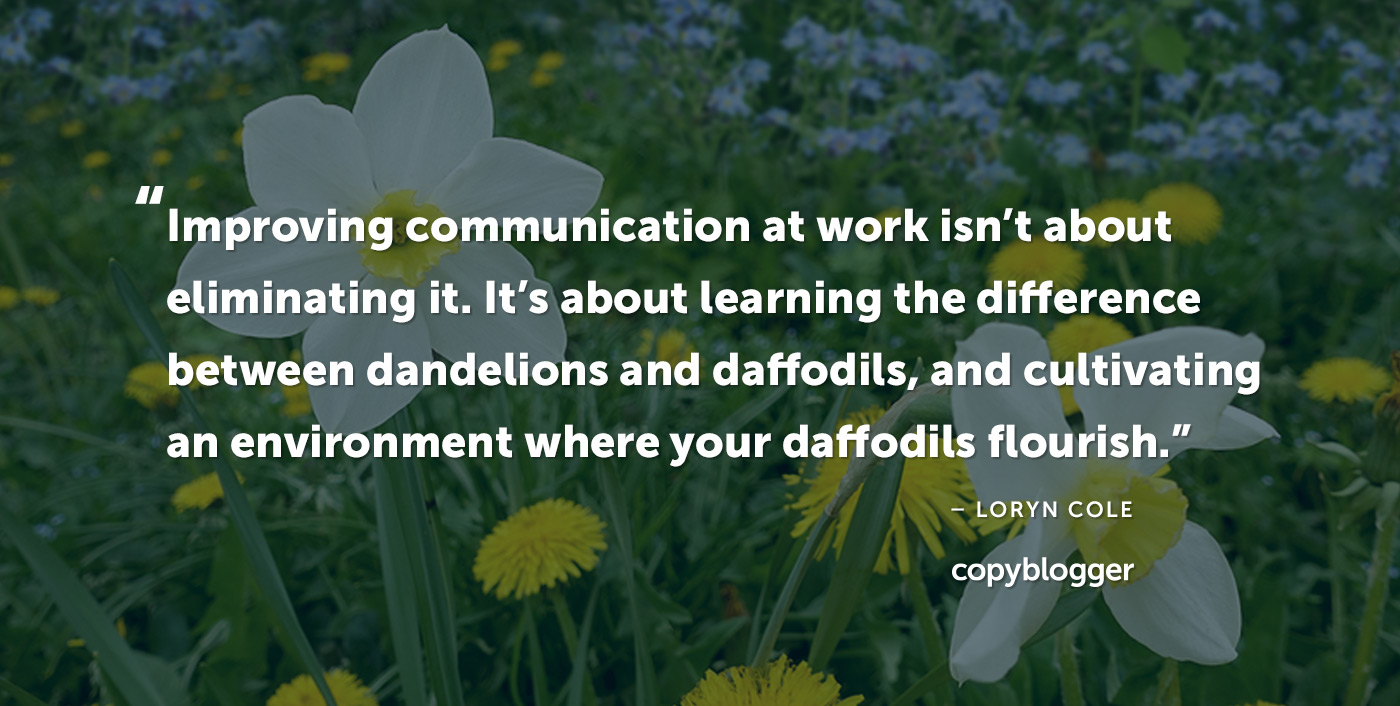If you work with a team or for clients, you probably wish you had better communication.
Even with the best, most productive teams and client relationships, things always slip through the cracks.
Meetings that should have been emails, back-and-forth IMs, long-overdue tasks that get ignored, and misunderstood intentions.
In an ideal world, we’d all have exactly the right information at exactly the right time.
But even with our arsenal of tools, including email, IM, project management platforms, and more, we never seem to be able to reach that information nirvana.
I’ve been on several teams that struggled with communication — some remote, some in-person, some inherently dysfunctional, and others amazing — and I’ve realized that the root of the communication problems wasn’t about tools or processes at all.
It was about mindset.
You can’t just kill all of the weeds
At the end of March, my husband and I bought our first house, and one of my favorite things about it is the beautiful backyard full of blossoming bulbs and bushes.
After we moved in, though, I looked closer at our beds of irises, rhododendrons, and roses and found … weeds.
My impulse was to pull them all up.
In one Saturday afternoon, I filled half a compost bin with dandelions, wild onions, groundsel, and mouse-ear cress … only to look up and realize I wasn’t even close to halfway done.
There had to be a better way.
Like a good new homeowner, I turned to Google for lawn care advice and learned that the problem wasn’t really the weeds — it was the yard itself.
Our landscaping was too spread out, for one, and all of the beds needed to be re-mulched. But worst of all, the grass had drained the nutrients from the soil.
Even if I had pulled up all of the weeds that afternoon, they would have been back in a week.
Instead, to keep my yard beautiful without marathon weed-pulling sessions, I needed to target the underlying problems, and better cultivate the right environment for the yard I wanted.
In that way, workplace communication is kind of like a garden. Communication is a growing, changing entity, almost organic in its own right, and if it’s not properly structured and cared for, it can get out of control.
Not to mention, some kinds of communication are useful and good, like a breakthrough conversation with a client (or my gorgeous irises). Others, like constant back-and-forth emails, are more like annoying weeds.
When we set out to streamline communication at work, we tend to start with a “pull up all of the weeds” attitude.
It’s like the anti-meeting crusade, or “inbox zero.” These all-or-nothing movements ignore that, sometimes, you need a good, long meeting to work through a project, and email doesn’t have to always be ruthlessly efficient.
Improving communication at work isn’t about eliminating it. It’s about learning the difference between dandelions and daffodils, and cultivating an environment where your daffodils flourish.
How our tools change the way we think about communication
Living in a time when we can easily and instantaneously interact with team members on the other side of the world, it’s easy to forget how difficult communication used to be.
A few decades ago, offices ran on paper and faxes, memos and mail rooms, and even complex systems of pneumatic tubes.
We employed people to file and type, and if you needed to quickly get an important contract to a client across town, you paid a courier to take it.
Compared to the internet, those formerly routine logistics feel complicated — and exhausting.
But no matter how fast or cheap it is to move information from one place to another, the act of good communication has been, and always will be, work.
Generally, I’m not one to blindly blame the internet for society’s ills. But, it seems to me that because communication has become so easy and unrestricted, maybe we’ve gotten a bit lazy.
If you only have 50 characters to convey an important message in a telegram, you use them well. If you have to type up a memo, make 30 copies of it, and distribute it by hand to your team, you make sure that memo has the right information.
I’m not saying everyone who wrote a memo or telegram did it carefully and perfectly. But when we have so many options for tools and platforms to help us communicate, it’s easy to blame them for our bad communication habits.
When really, the problem is:
We aren’t doing the work of thinking through the information and why we’re sharing it, putting ourselves in the shoes of the person who needs it.
The tools, platforms, and processes we use to communicate are just the structure. In our garden analogy, they would be the landscaping, the plan for which plants you’re going to grow where.
Smart landscaping is undoubtedly part of a weed-prevention strategy, but landscaping alone can’t fix poor conditions.
Ferns planted in too much sun will wilt, roses with no drainage will rot, grass with no nutrients will die, and the dandelions will take over.
In the same way, if your team doesn’t give your project management tools and processes the care, attention, and energy they need, annoying, weedy communication will proliferate in its place.
Learn to cultivate good communication
If your team struggles with communication and project management, maybe it’s time to reconsider your mindset.
Ask yourself:
Are we creating the right kind of conditions for good communication?
The solution will be different for every team, but it’s important to remember that productive and useful communication doesn’t always happen naturally.
If you want to cut down on time-wasting communication and bring out the best in your team, first you must create the right environment for good communication to flourish.

This article's comments are closed.